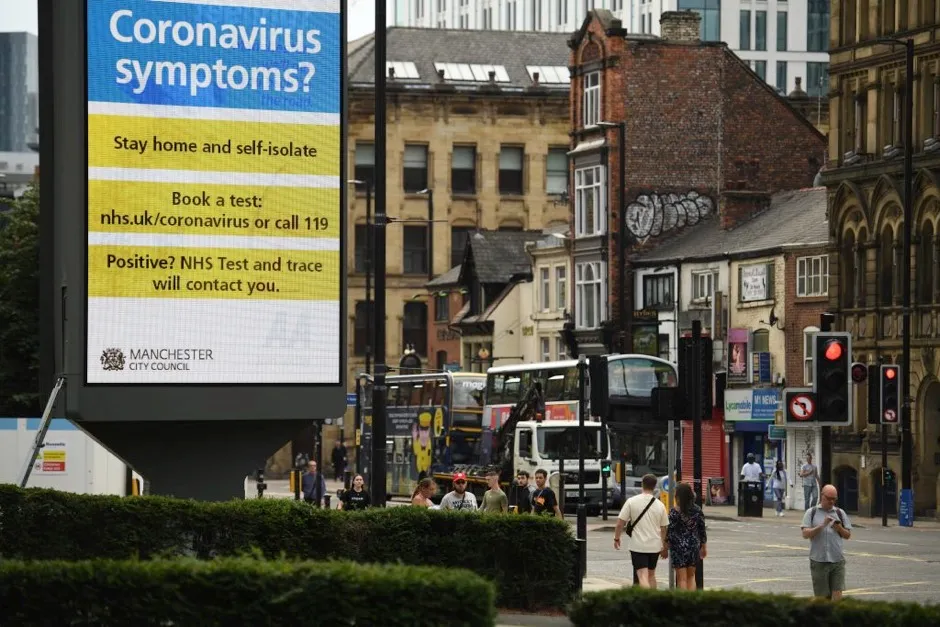The isolation of asymptomatic patients may be necessary to control the spread of coronavirus, a new study has suggested.
Scientists say their findings indicate that symptomatic and asymptomatic people have a similar amount of the virus in their blood, known as the viral load.
Researchers analysed data from a cohort of 303 symptomatic and asymptomatic patients with COVID-19 between 6 and 26 March, 2020.
Participants were isolated in a community treatment centre in Cheonan, South Korea.
Read the latest coronavirus news:
- Coronavirus: Samples needed to help dogs sniff out COVID-19
- Asymptomatic coronavirus found in 'up to 20 per cent of people' in UK-based study
- COVID-19: Second wave could be twice as high without contact tracing
The scientists found that 110 participants, 36.3 per cent of the cohort, were asymptomatic at the time of isolation and 21 of these (19.1 per cent) developed symptoms during isolation.
The findingsindicate 80.9 per cent of patients with the disease who were asymptomatic at the time of a positive test remained asymptomatic during a median of 24 days from diagnosis.
Population-based surveillance and isolation of asymptomatic patients may be required... Isolation of infected persons should be performed regardless of symptoms
Researchers from Soonchunhyang University Seoul Hospital
The researchers, who published their study in JAMA Internal Medicine, used a testing method called RT-PCR to identify SARS-CoV-2, the name of the coronavirus that causes COVID-19, in samples from the participants.
This test gives a result known as the cycle threshold (Ct) value – a number that refers to when the detection of the virus occurs and helps indicate a person’s viral load. A low Ct value indicates a larger amount of the virus present.
The Ct values for SARS-CoV-2 in asymptomatic patients – those not displaying any symptoms – were found to be similar to those in symptomatic patients. This means they could be spreading the virus at the same rate as those who have COVID-19 symptoms.

The researchers from Soonchunhyang University Seoul Hospital in Seoul, South Korea, wrote: “In this cohort study of symptomatic and asymptomatic patients with SARS-CoV-2 infection who were isolated in a community treatment centre, the Ct values in asymptomatic patients were similar to those in symptomatic patients.
“Because transmission by asymptomatic patients with SARS-CoV-2 may be a key factor in community spread, population-based surveillance and isolation of asymptomatic patients may be required.”
They added: “Many individuals with SARS-CoV-2 infection remained asymptomatic for a prolonged period and viral load was similar to that in symptomatic patients.
“Therefore, isolation of infected persons should be performed regardless of symptoms.”
Read more about testing for COVID-19:
- Isle of Wight COVID-19 cases 'rapidly declined' after test and trace launch
- New saliva test for COVID-19 to be trialled in Southampton
- Coronavirus: Scottish sewage tested to track spread of COVID-19
A previous study in a long-term care facility showed 56.5 per cent of patients with the virus were asymptomatic at the time of diagnosis, and 23.1 per cent remained asymptomatic during seven days.
The current NHS advice is that people who have symptoms of coronavirus – a high temperature, new continuous cough, or loss of smell or taste – or those who have tested positive for the virus should self-isolate.
This also applies to anyone who lives with someone who falls into those categories or if someone in the support bubble has symptoms or has tested positive.
According to the guidance, those who have symptoms, or live with someone who has symptoms, should be tested.
However, while people at high risk of catching COVID-19 can be tested for the virus even if they have no symptoms, the government advice is that people should not arrange for testing unless they develop symptoms of COVID-19.
What is the R number, and why is it relevant to coronavirus?
The reproduction number – often called the R value or R number – is a measure of a disease’s ability to spread. It tells us how many people a single infected person will pass on the disease to.
The R number for COVID-19 that’s being quoted in the media and government briefings is what’s known as the ‘effective’ reproduction number. This value can go up and down.
We can reduce R by making it harder for the disease to spread, by implementing measures such as social distancing, closing restaurants and non-essential shops, and encouraging people to stay at home.
Every disease also has what’s called a ‘basic’ reproduction number, R0, which is the fixed value of R if no measures are put in place. For example, measles is highly contagious, with a R0 as high as 18, while COVID-19 has a R0 of around three.
So if COVID-19 was allowed to spread through the population, an infected person would, on average, give the disease to three other people.
But if all these people are practising physical distancing, then the virus can’t spread so easily and the effective R value goes down.
The crucial thing is to keep R below 1. If we can do this, then the number of new cases dwindles and the outbreak will eventually come to a halt.
Conversely, if R rises above 1, then we run the risk of rapidly escalating case numbers that would require stronger measures to keep the virus under control.
Because of this, R is used by governments to assess how we are doing in our efforts to stop the spread of COVID-19, and to adjust our actions, if needed.
Read more:
